Fourth European Dark-Sky Symposium, Paris
Sep
30:
Delegates from dark-sky movements in ten European countries, and a contingent
from the International Dark-Sky Association (IDA), came together with
environmentalists, biologists, local government officers and lighting
professionals to discuss progress and challenges in the international
dark-skies debate in Paris.
 FULL STORY FULL STORY
 |  |

|
 |
Scientists say supernova explosions imminent
Sep
30:
Three powerful recent blasts from three wholly different regions in space
have left scientists scrambling. The blasts, which lasted only a few seconds,
might be early alert systems for supernovae, which could start appearing any
day.
 FULL STORY FULL STORY
 |  |

|
 |
Evidence shaky for role of Sun in past climate changes
Sep 30:
Computer models of Earth's climate have consistently linked long-term,
high-magnitude variations in solar output to past climate changes. Now
a closer look at earlier studies of the Sun and Sun-like stars casts
doubt on the evidence of such cycles, their intensity, and their possible
influence on Earth's climate.
 FULL STORY FULL STORY
 |  |

|
 |
Music rings of Saturn
Sep
29:
Looking something like the fibrous bow of a violin, Saturn's colourful rings
sweep through this spectacular natural colour view while two small moons look
on.
 FULL STORY FULL STORY
 |  |
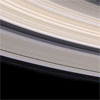
|
 |
Asteroid zooms safely past Earth
Sep
28:
A mountain-sized asteroid made its closest approach to Earth on Wednesday,
September 29th. Although asteroid 4179 Toutatis came no closer than four times
the distance between the Earth and the Moon, this was the closest approach of
any known asteroid of comparable size this century.
 FULL STORY FULL STORY
 |  |

|
 |
Herding Saturn's rings
Sep
26:
Saturn's moon Prometheus is seen shepherding the inner edge of Saturn's F ring.
Prometheus is 63 miles across and was captured in a close-up view by the Cassini
spacecraft near the time of orbital insertion at Saturn. A number of clumps
are visible here along the arcing F ring.
 FULL STORY FULL STORY
 |  |

|
 |
Chandra watches a glowing cloud dubbed the Mouse
Sep
25:
Astronomers have used an X-ray image to make the first detailed study of the
behaviour of high-energy particles around a fast moving pulsar. The image,
from NASA's Chandra X-ray Observatory, shows the shock wave created as a
pulsar plows supersonically through interstellar space.
 FULL STORY FULL STORY
 |  |

|
 |
Hubble's view approaches the dawn of galaxies
Sep
24:
Detailed analyses of mankind's deepest optical view of the universe by several
expert teams have at last identified what may turn out to be some of the earliest
star-forming galaxies. Astronomers are now debating whether the hottest stars
in these early galaxies may have provided enough radiation to "lift a curtain" of
cold, primordial hydrogen that cooled after the Big Bang.
 FULL STORY FULL STORY
 |  |

|
 |
Massive merger of galaxies is most powerful on record
Sep
23:
An international team of scientists announced September 23rd that they observed
a nearby head-on collision of two galaxy clusters. The clusters smashed together
thousands of galaxies and trillions of stars. It is one of the most powerful
events ever witnessed. Such collisions are second only to the Big Bang in total
energy output.
 FULL STORY FULL STORY
 |  |

|
 |
Genesis team ships first recovered sample
Sep
23:
The Genesis team has shipped its first scientific sample from the mission's
specially constructed cleanroom at the U.S. Army Proving Ground in Dugway, Utah.
The sample, containing what are known as "lid foils," was attached to the interior
lid of the Genesis sample return capsule.
 FULL STORY FULL STORY
 |  |

|
 |
Space telescope will watch powerful cosmic blasts
Sep
23:
An agile gamma-ray observatory with a focus on the most intense explosions in
the cosmos — cataclysmic blasts occurring every day throughout the universe
that seemingly foreshadow the creation of black holes — will be launched
into space on October 26th.
 FULL STORY FULL STORY
 |  |

|
 |
High energy mystery lurks at the galactic centre
Sep
22:
A mystery lurking at the centre of our own Milky Way galaxy — an object
radiating high-energy gamma rays — has been detected by a team of astronomers.
The research was carried out using an array of four telescopes in Africa.
 FULL STORY FULL STORY
 |  |

|
 |
Sugar in space provides clue to origin of life
Sep
21:
Astronomers have discovered a frigid reservoir of simple sugar molecules in
a cloud of gas and dust some 26,000 light-years away, near the centre of our
Milky Way Galaxy. The discovery suggests how the molecular building blocks
necessary for the creation of life could first form in interstellar space.
 FULL STORY FULL STORY
 |  |

|
 |
Foreseeing the Sun's fate
Sep
19:
For more than 400 years, astronomers both professional and amateur have taken
a special interest in observing Mira stars, a class of variable red giants famous
for pulsations that last for 80-1,000 days and cause their apparent brightness
to vary by a factor of ten times or more during a cycle.
 FULL STORY FULL STORY
 |  |

|
 |
Huygens test successful
Sep
19:
The European Space Agency's Huygens probe, now orbiting Saturn onboard the Cassini
spacecraft, is in good health and successfully passed its fifteenth 'In-Flight
Checkout' last week. This test procedure was the last but one planned before
separation of the Huygens probe from Cassini in December.
 FULL STORY FULL STORY
 |  |
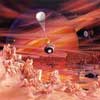
|
 |
Radical Antarctic telescope 'would outdo Hubble'
Sep
17:
A novel Antarctic telescope with 16-metre diameter mirrors would far outperform
the Hubble Space Telescope, and could be built at a tiny fraction of its cost,
says a scientist from the Anglo-Australian Observatory in Sydney, Australia.
 FULL STORY FULL STORY
 |  |

|
 |
Intelligent telescopes survey the violent skies
Sep
17:
British astronomers are celebrating a world first that could revolutionize the
future of astronomy. They have just begun a project to operate a global network
of the world's biggest robotic telescopes which will be controlled by intelligent
software to provide rapid observations of sudden changes in astronomical objects,
such as violent Gamma Ray Bursts, or 24-hour surveillance of interesting phenomena.
 FULL STORY FULL STORY
 |  |

|
 |
Genesis team hopeful about solar wind samples
Sep
16: Genesis team scientists and engineers continue their work
on the mission's sample return canister in a specially constructed clean room
at the U.S. Army Proving Ground in Dugway, Utah. As more of the capsule's contents
are revealed, the team's level of enthusiasm for the amount of science obtainable
continues to rise.
 FULL STORY FULL STORY
 |  |

|
 |
Colourful threads and shadows of Saturn
Sep
16: Saturn's faintly banded atmosphere is delicately coloured
and its threadbare rings cross their own shadows in this marvellous natural
colour view from Cassini.
 FULL STORY FULL STORY
 |  |
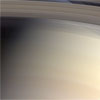
|
 |
Galactic contortionists captured in amazing image
Sep
15: A stunning image released by the Gemini Observatory captures
the graceful interactions of a galactic ballet, on a stage some 300 million
light years away, that might better be described as a contortionist's dance.
 FULL STORY FULL STORY
 |  |

|
 |
Cassini orbiter snaps Saturn's family portrait
Sep
13: A stately Saturn poses for a portrait with five of its moons
in this Cassini spacecraft wide angle camera view. The moons visible include
Dione, Enceladus, Tethys, Mimas and Rhea.
 FULL STORY FULL STORY
 |  |
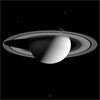
|
 |
Dark matter superstructure revealed by Chandra
Sep
14: A nearby galaxy cluster is facing an intergalactic headwind
as it is pulled by an underlying superstructure of dark matter, according to
new evidence from NASA's Chandra X-ray Observatory.
 FULL STORY FULL STORY
 |  |

|
 |
Glimpse of exotic matter in a neutron star
Sep
14: Scientists have obtained their best measurement yet of the
size and contents of a neutron star, an ultra-dense object containing the strangest
and rarest matter in the universe.
 FULL STORY FULL STORY
 |  |

|
 |
Airborne observatory sees stars for first time
Sep
12: For the first time, scientists have peered at the stars using
the newly installed telescope aboard NASA's Stratospheric Observatory for Infrared
Astronomy (SOFIA), the largest airborne observatory in the world.
 FULL STORY FULL STORY
 |  |

|
 |
Dying star creates fantasy-like gas and dust sculpture
Sep
11: In this detailed view from NASA's Hubble Space Telescope,
the so-called Cat's Eye Nebula looks like the penetrating eye of the disembodied
sorcerer Sauron from the film adaptation of "The Lord of the Rings."
 FULL STORY FULL STORY
 |  |

|
 |
Cassini discovers ring and one, maybe two, objects
Sep
9: Scientists examining Saturn's contorted F ring, which has baffled them since
its discovery, have found one small body, possibly two, orbiting in the F ring
region, and a ring of material associated with Saturn's moon Atlas.
 FULL STORY FULL STORY
 |  |
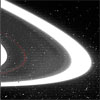
|
 |
Scientists follow doomed matter around black hole
Sep
9: Scientists have pieced together the journey of a bundle of doomed matter as it
orbited a black hole four times, an observational first. Their technique provides
a new method to measure the mass of a black hole, and this may enable the testing
of Einstein's theory of gravity to a degree few thought possible.
 FULL STORY FULL STORY
 |  |

|
 |
Mars may have had large sea near rover landing site
Sep
8: Spacecraft observations of the landing area for one of NASA's two Mars rovers
now indicate there likely was an enormous sea or lake covering the region in
the past, according to a new University of Colorado at Boulder study.
 FULL STORY FULL STORY
 |  |

|
 |
Galactic collision reveals fate of our Milky Way
Sep
8: NASA's Spitzer Space Telescope has set its infrared sight on a major galactic
collision and witnessed the future of our own Milky Way galaxy. 68 million light-years
away, the Antennae galaxies are locked in a dance of death, with stars being ripped
from their orbits and spiral arms being shredded into streamers that dangle in space.
Several billion years from now, our home might look the same.
 FULL STORY FULL STORY
 |  |

|
 |
Brightest supernova in a decade captured by Hubble
Sep
4: A University of California, Berkeley, astronomer has turned the NASA Hubble Space Telescope
on the brightest and nearest supernova of the past decade, capturing a massive stellar
explosion blazing with the light of 200 million suns.
 FULL STORY FULL STORY
 |  |

|
 |



